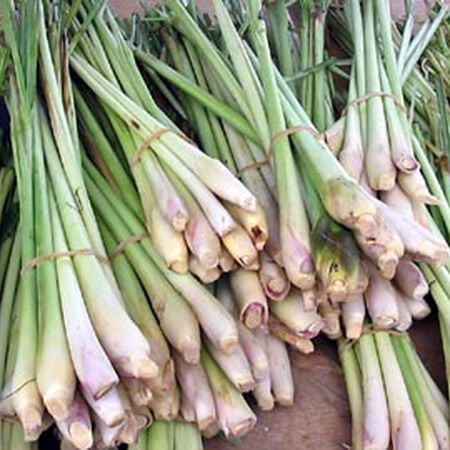Common, Lemongrass Seed
Key Attributes
Key Attributes
Product Details
Weight
0.008Depth
0.1Height
4.5Width
3.25Plant Height
3-4'Botanical Name
Cymbopogon flexuosusSeed Type
SeedSeeds Per Gram
2,589Seeds Per Pound
1,174,000Packet
50 SeedsSow Depth
Top of SoilSeeds Per Ounce
73,375Breed
Open-pollinatedSun
Full SunLife Cycle
Tender PerennialSow Method
TransplantCategories
HerbGermination
11,12,13,14,7,8,9,10Days To Maturity (# Days)
75Components
Growing Instructions
![]() Learning Download: How to Grow Lemongrass
Learning Download: How to Grow Lemongrass
Lemongrass originates from southern India and is an aromatic plant with a citrusy scent. Lemongrass is a perennial herb, which means it will come back year after year. It grows in grassy clumps that can reach up to 5 feet tall.
Before Planting: Lemongrass grows best in the summer and does well in heat, as it is a tropical plant. It grows best in a container and prefers full sun.
Planting: Plant lemongrass seeds ¼ inch deep and 1 inch apart and begin them inside up to three weeks before the last frost date. If planting inside, plant the lemongrass in seedling trays that can be covered so the seeds have a warm, moist environment to germinate. Once the seedlings appear, remove the plastic covering and transplant them outdoors to a location in full sun.
Watering: Throughout lemongrass’s growing period, keep its soil moist by watering two to three times a week.
Fertilizer: Feed lemongrass with a high-nitrogen fertilizer when you transplant it outdoors, such as alfalfa meal or blood meal. To fertilize, mix ½ cup of the fertilizer into the soil before transplanting the lemongrass seedlings. After transplanting, fertilize lemongrass every couple of weeks during its growing season with a liquid plant food or fish emulsion.
Days to Maturity: Lemongrass is ready to harvest when the stalks are at least ½ inch thick, dark green and at least 18 inches tall. (See variety for days to maturity)
Harvesting: Harvest lemongrass by snipping the entire stalk at its base. When harvesting lemongrass, be sure to wear gloves as the stalks can irritate the skin. At the end of its growing season, cut lemongrass plants back to only 6 inches tall and reduce watering and discontinue fertilizing.
Tips: Sometimes, lemongrass can suffer from leaf blight, which is when the lemongrass leaves turn brown and begin to wilt. Remove the infected leaves and spray the plant with copper sulfate, which is a fungicide that is safe for edible plants.
Shipping Schedule
Our Seed Promise
 "Agriculture and seeds" provide the basis upon which our lives depend. We must protect this foundation as a safe and genetically stable source for future generations. For the benefit of all farmers, gardeners and consumers who want an alternative, we pledge that we do not knowingly buy or sell genetically engineered seeds or plants.
"Agriculture and seeds" provide the basis upon which our lives depend. We must protect this foundation as a safe and genetically stable source for future generations. For the benefit of all farmers, gardeners and consumers who want an alternative, we pledge that we do not knowingly buy or sell genetically engineered seeds or plants.
The mechanical transfer of genetic material outside of natural reproductive methods and between genera, families or kingdoms, poses great biological risks as well as economic, political, and cultural threats. We feel that genetically engineered varieties have been insufficiently tested prior to public release. More research and testing is necessary to further assess the potential risks of genetically engineered seeds. Further, we wish to support agricultural progress that leads to healthier soils, to genetically diverse agricultural ecosystems, and ultimately to healthy people and communities.
To learn more about the "Safe Seed Pledge" please visit www.councilforresponsiblegenetics.org.

